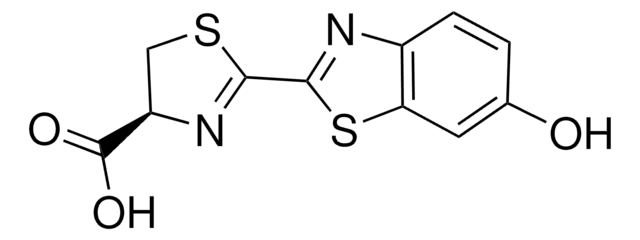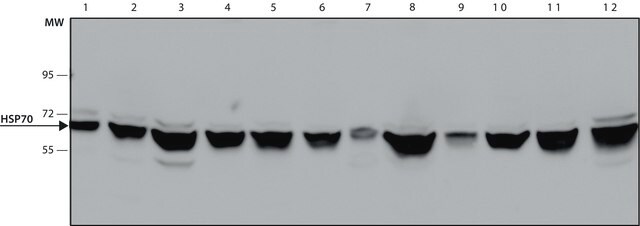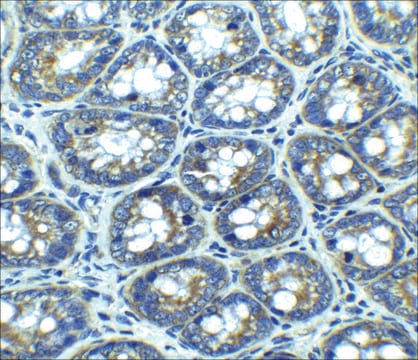L2164
Anti-Luciferase antibody, Mouse monoclonal

clone LUC-1, purified from hybridoma cell culture
Sinónimos:
Anti-Luciferase Antibody
About This Item
Productos recomendados
biological source
mouse
conjugate
unconjugated
antibody form
purified immunoglobulin
antibody product type
primary antibodies
clone
LUC-1, monoclonal
form
buffered aqueous solution
mol wt
60 kDa
enhanced validation
recombinant expression
Learn more about Antibody Enhanced Validation
concentration
~2 mg/mL
technique(s)
immunocytochemistry: 20-40 μg/mL using transfected 293Tcells expressing luciferase
immunocytochemistry: suitable
western blot: 2-4 μg/mL using whole extract of transfected 293T cells expressing luciferase
western blot: suitable
shipped in
dry ice
storage temp.
−20°C
target post-translational modification
unmodified
General description
Specificity
Application
- immunoblotting
- immunocytochemistry
- immunohistochemistry
Biochem/physiol Actions
Physical form
Preparation Note
Storage and Stability
Disclaimer
¿No encuentra el producto adecuado?
Pruebe nuestro Herramienta de selección de productos.
Storage Class
10 - Combustible liquids
wgk_germany
WGK 1
flash_point_f
Not applicable
flash_point_c
Not applicable
Certificados de análisis (COA)
Busque Certificados de análisis (COA) introduciendo el número de lote del producto. Los números de lote se encuentran en la etiqueta del producto después de las palabras «Lot» o «Batch»
¿Ya tiene este producto?
Encuentre la documentación para los productos que ha comprado recientemente en la Biblioteca de documentos.
Nuestro equipo de científicos tiene experiencia en todas las áreas de investigación: Ciencias de la vida, Ciencia de los materiales, Síntesis química, Cromatografía, Analítica y muchas otras.
Póngase en contacto con el Servicio técnico








